 |
Satish Lele lelepiping@gmail.com |
View this page as YouTube Video Presentation
Nozzle Loads – What are they?:
API 610 vs. ANSI Allowable Forces and Moments:
Nozzle Load Issues for Different Pump Types:
Information Stress Engineering Needs:
Special Cases:
We need to understand how our equipment interacts with the other aspects of the plant, especially piping. All API equipment codes have formulas or tables for “Allowable Nozzle Loads”. What are Nozzle Loads?: Nozzle loads are the net forces and moments exerted on equipment nozzles from the weight and thermal expansion of connected piping and equipment. The loads exerted on equipment are directly related to how the equipment and piping are supported. Increased nozzle loads are a cause of misalignment and increased wear and vibration rates in pumps.
Pumps: On pump, the discharge nozzle will grow with temperature, exerting a force on the piping above. Between bearing pumps are more complicated because the nozzles thermally grow up from the centerline, as well as horizontally away from the centrrline. The layout and support of the piping will affect the forces and moments exerted on the equipment. The net force on the discharge nozzle of a pump is the force of the piping weight and thermal expansion load minus the force of the nozzle’s thermal growth. For horizontal pumps, two effects of nozzle loads are considered: Distortion of the pump casing and misalignment of the pump and driver shafts. Temperature affects expansion of piping/equipment. Pressure affects pipe stiffness (more pressure = thicker pipe). Client piping layout requirements valves at grade or overhead. Maintenance access. Steel / Support locations available and Base plate design.
Stress Engineering: Software packages allow engineer to build a 3D model of the piping system, add supports, temperature and pressure information, and see how the piping reacts. Shows movement of the pipe, stresses on the pipe, and loads on supports and equipment flanges.
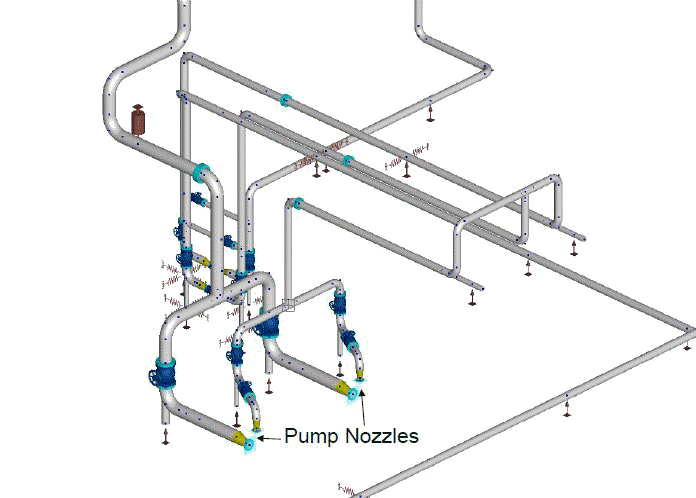
Pipe Supports: Vertical Support: keeps the pipe from falling down provided by Support steel, shoe, base support, spring. Horizontal Guide: holds the pipe parallel to its axis. Directional Anchor (DA): holds the pipe perpendicular to its axis, thermal growth will occur in both directions along the pipe axis. Full Anchor: combination of a guide and directional anchor; pipe will not move in any direction. Variable Spring: Takes the weight load (GR) to reduce load in vertical direction. Does not impose a reaction load because spring moves up or down. As pipe moves, spring reacts. Constant Spring: Similar to variable spring. Used for vertical movements > 3”. Reduces variability.
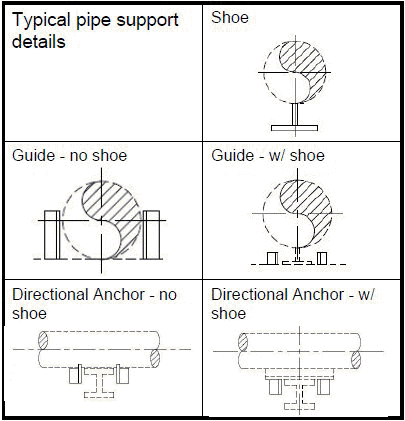
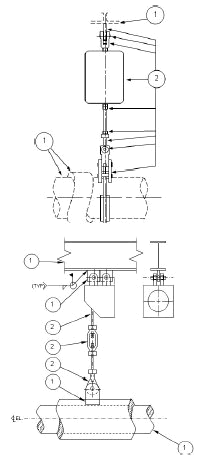
Strut: Used for restraint of piping systems near critical equipment. Adjustable, zero gap, zero friction. Better than Guides and DAs at restraining thermal/friction loads. Not dependant on steel location; can adjust location inches at a time.
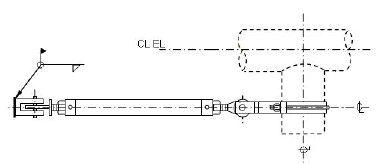
Teflon Slide Plate (TSP): Reduces friction so support can slide easily. Usually placed under a shoe or base support. Allows expansion of pipe & equipment to reach steady state without overcoming a large friction force.
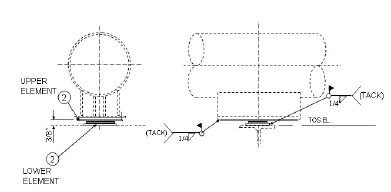
Typical Piping Layout: Try to negate forces and moments by supporting the pipe at the same level as the pump. (Equal thermal growth)
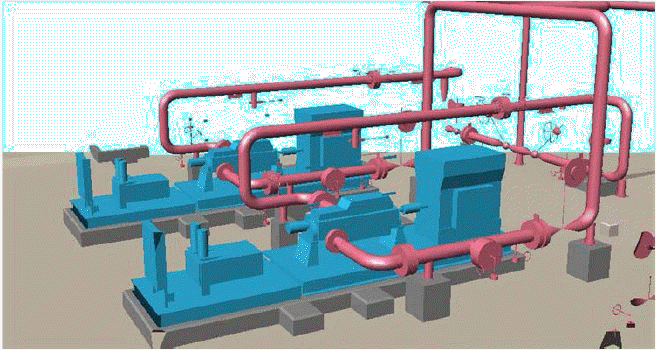
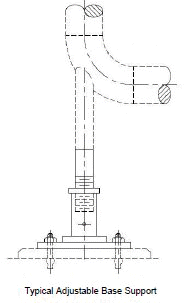
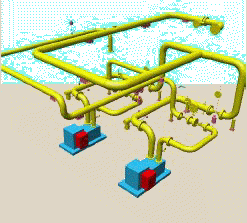
How nozzle loads can be reduced: Increase piping flexibility (add loops). Add springs, struts and slide plates. Add hot by-pass (very common). Can mount pumps on slide plates or springs. In extreme cases, add expansion joints. Must be a low pressure system. Not recommended, expansion joint is usually the weakest point in the system.
Special Cases: Heavy Flanges (ANSI 1500#). High Temperature Pumps. Sea Water Pumps (HDPE piping). Expansion joints. Reciprocating Compressors. Steam Turbines. Screw Pump.
- Codes
- Pumps: API 610 10th Ed., Section 5.5 and Annex F, ANSI/HI 9.6.2
- Centrifugal and Vertical Pumps for Allowable Nozzle Loads, PIP RESP002 – Design Of ASME B73.1 And General Purpose Pump Base plates.
- Compressors: API 617 7th Ed., Section 2.3.4 and Annex 2.E, API 618 5th Ed., Section 7.9.4.2 and Annex N, API 619 4th Ed., Section 5.4 and Annex C.
- Piping: ASME B31.3 – 2008, Chapter II Part 5 – Flexibility and Support.
 to get all the information as a eBook
to get all the information as a eBook
